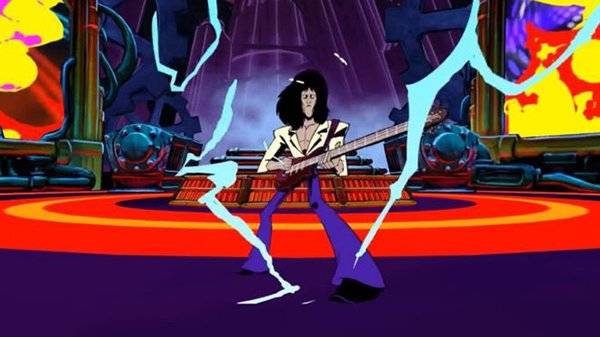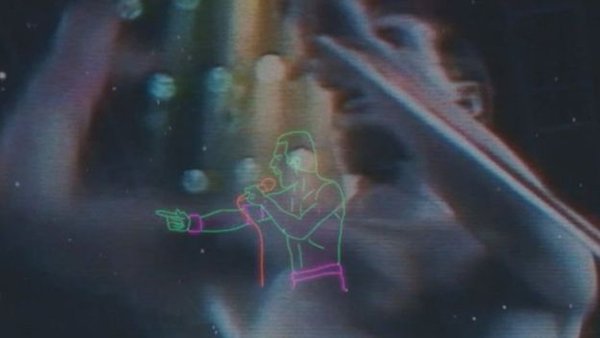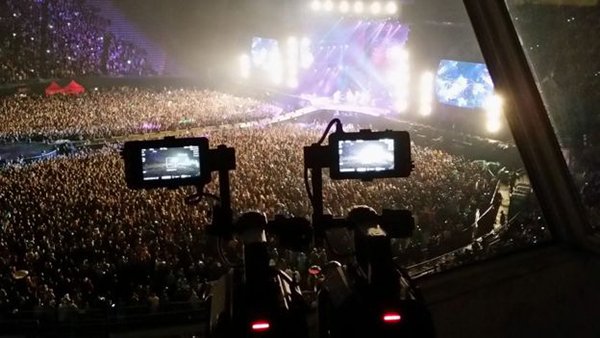With the development of virtual reality technology, people increasingly want to combine the technology with the traditional industry, thus stimulating the industry's innovation and upgrading.

For the music industry, VR technology may be the best carrier for its future, because it can make music from a simple auditory enjoyment, into a more realistic pluralistic content, so that it can be better developed.
In September last year, Google teamed up with the Queen and Enosis VR Studios to launch the VR version of the Bohemian Rhapsody app.
This application uses 2D and 3D animations and ballet dancers combined with motion capture to create a “immersive feeling with the Queen on the same stage†by interacting with the user through visual and auditory elements. Changes in the narrative approach change as the viewer's eyes move.
The original version of "Bohemian Rhapsody" was included in the album "A Night at the Opera" (1975). It is quite well known in Western societies and is often referred to as "Bo Rhap" in a popular way. It represents the 1980s. The style of pop music.
The structure of the original music is extremely special. There are no repeating choruses in the music, but it is composed of many parts that are fragmented and have very different paces. Therefore, making VR version is not easy. However, the effect is not satisfactory. This also shows that the combination of music industry and VR will greatly promote the upgrading of the industry.

"exciting"
Immersive technologies such as VR are transforming market tools into new sources of revenue, bringing new vitality to the digital “destroyed†business model that was digitalized 20 years ago.
Dylan Southard, director of VR Playhouse, a VR/AR creative studio in the United States, said that watching videos in a 360° scene can achieve exciting results. This is a feeling that a flat screen cannot present.
“In VR, the audience’s sense of presence will be even stronger, all the plots will be more attractive, and people will feel emotionally 'difficult' and will feel the same in the story,†said Southard.
Currently, VR Playhouse has teamed up with some artists to create some 360-degree VR videos.
Although VR technology is still in its early stages, and comfortable VR headsets have just been available, for the music industry, integration with VR is an indispensable experiment and experiment.
Zach Fuller, an analyst at MIDiA Research, a UK music industry analyst firm, points out that VR is gradually merging with the "visually-centric" music industry.
American R & B singer Beyonce's sixth album "Lemonade" and Frank Ocean's "Vision Album" "Endless" are accompanied by film elements, indicating that the future of visual music is bright, and virtual reality technology can boost this trend.
Ross Cairns, the creative director of the VR version of the Flammable VR version of the Scottish rock band Biffy Clyro, believes that many people are focusing on the development of VR technology. Any new potential discoveries will be applied to the music industry.

"Interactive"
VR technology can present more exciting immersive music videos on the one hand, and can greatly change the live music field on the one hand.
“VR technology brings a sense of presence that no other medium can achieve. VR live broadcasts at concerts are good, people are willing to pay, and in the future this may be an important source of profit for musicians and companies.†Polish music distribution company Circus Digitalis CEO Jacek Naglowski said.
Last year, the global live performance industry giant Live Nation announced that they will team up with Citibank and NextVR for more than a hundred VR concerts.

"Sway together"
VR technology can also provide the band with a unique shared VR space, thus eliminating the need to rent an entity concert hall.
In 2014, the British independent rock band The Indelicates released the VR version of the popular single "The Generation That Nobody Remembered" through virtual reality technology.
Singer Simon Clayton said that in this way, fans and other musicians around the world can perform with him.
Projecting a band into a computer-virtual environment can also allow others to participate in interactions, which brings wireless possibilities to art creators and builds new ways of connecting viewers.
The music scene of the future must be the audience entering the singer's world, not the unilateral "he sings to me" single song scene.
In February of last year, Wevr, a virtual reality startup based in Venice, California, has raised $25 million in funding. Its investors include HTC, Samsung Ventures, and Orange. In 2016, the company participated in the production of the VR version of the "Old Friend" of the Future Islands band.
Wevr co-founder Anthony Bat believes that whether it is a music video experience or other VR experience, the ultimate goal is to allow consumers to enter the artist's world.
Dylan Southard, Director of VR Playhouse agrees with this view that pop singers must be able to create a world in which fans can interact with each other.

"Virtual world, real money"
In the early days of VR, the biggest challenge was how to commercialize the technology and bring cash flow.
Anthony Bat said that users experience a VR version of "Old Friend" need to pay $ 2.99, while sales reached "thousands."
The ultimate goal of Wevr is to sell content products through the Transport platform and explore other commercialization models.
"By making money, we will invest money again in artists and musicians. This is a virtuous cycle," Bat said.
The American startup Vrtify is good at transforming traditional music content into an immersive experience, but it will return 70% of its revenue to artists.

Marcus Behrendt, chief marketing officer of Vrtify, said that immersive technology is not the mainstream, but it is rapidly evolving. It has changed the way fans consume music and will soon become the main source of income for the music industry.
"Advertising, membership subscription, and billing are all good profit models," Behrendt said.
In China, some manufacturers have also begun to make money through VR concerts. For example, the Digital Kingdom teamed up with Whale VR to broadcast Faye Wong’s “Wing Music One†concert, with a price of 30 yuan each; the First Video Group also explored charging modes through VR live Tan Weiwei concerts, including hardware leasing. , viewing tickets sales and so on.
However, VR technology still has a long way to go before this immersive interactive music experience reaches the public. On the one hand, the development of hardware needs to be improved. People need a lightweight, small-sized and inexpensive comfort head-up as a medium. On the other hand, the creation of creative content needs continuous exploration. The perfect combination of the two will enable the entire music industry and audience to better experience the advantages of VR.
Bi Directions Thyristor (Triac)
Bi Directions Thyristor (Triac) is equivalent to the antiparallel connection of two unidirectional thyristors, but only one control pole.
Bidirectional thyristors are made of N-P-N-P-N five-layer semiconductor materials, and three electrodes are also derived from the outside. Its structure is shown in the figure. Bi-directional thyristor volt-ampere characteristic curve Since the forward and reverse characteristics of the bidirectional thyristor are symmetrical, it can be turned on in any direction and is an ideal AC switching device.
Bi Directions Thyristor,Electronic Components Triac,Power Thyristor For Inverter,Silicon Power Bipolar Transistors
YANGZHOU POSITIONING TECH CO., LTD. , https://www.yzpst.com